4 Types of Raw Food Diets
You can see from this article that there are many variations of a raw food diet. Don’t select a very rigid plan, at least initially. Learn as you go.
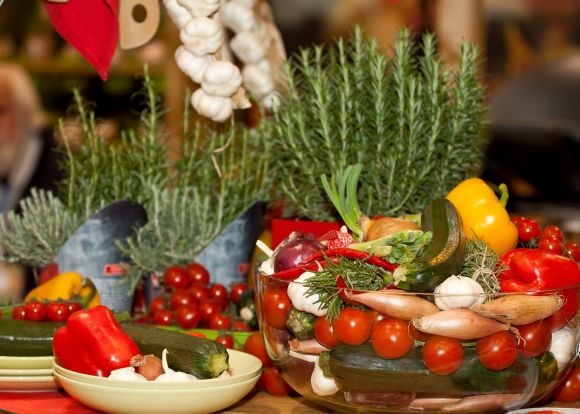
Table of contents
The 10 articles relating to raw food were revised in 2014. All of the other articles are new.
Summary
This article deals with the various types of raw food diets. Some may appeal to you while others may not. Each of the authors provide reasons why they and others have chosen to eat a particular type of raw food diet.
Sects
Sects are either smaller church organizations that elevate a secondary issue to the main position or they have a philosophically or politically “narrow” group of followers. Each sect acts in its own way.
Similar situations arise in the case of many ambiguous types of nutrition. Intentional or belief-based “otherness” is created — usually by skillfully written and convincing books that only look at one side. Such authors also confuse secondary issues with the main issues.
A person who eats a “normal” diet and has never read much on the topic of nutrition may consider raw foodists to be in this category.
And we also have to remember that no matter what type of diet change you make, you will experience both positive and negative results.
But what all of the types of raw food diets do have in common is that they at least temporarily improve a person’s health.
The World Health Organization (WHO) understands health to be a complete state of physical, mental, and social well-being and not merely the absence of disease or infirmity.
You should strive to achieve effects that are as long-term and perfect as possible. But in reality, pretty much everything is made up of compromises. This is why the practical feasibility of a diet and your efforts to optimize it are more important than maximization at any cost.
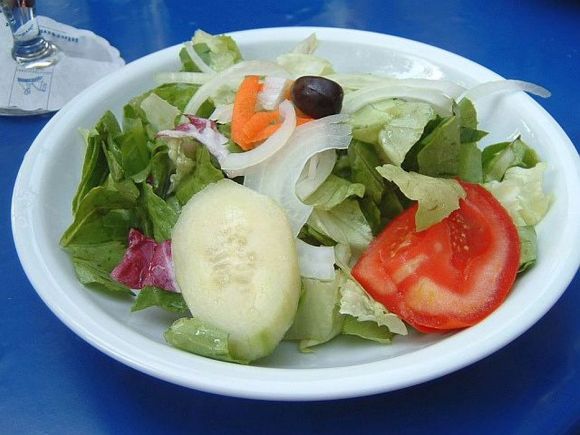
Be critical, and at the very least examine the different types of diets by reading relevant background information so that you can find the best possible option.
Your choice may well be different depending on your health condition and taste preferences. Success is often directly measureable. Don’t let anyone pigeonhole you. Learn as you go. Experiment.
1. Types of raw food diets
Just as with cooked food, we also find numerous and very different types of raw food diets.
- In terms of cooked foods, we distinguish between vegans, lacto-vegetarians, lacto-ovo vegetarians (vegetarians), and omnivores. The same categories are used within the world of raw food.
- Omnivores eat a variety of diets such as national dishes, whole foods, food combining (Hay Diet), macrobiotics (George Ohsawa 1893–1966), nouvelle cuisine, Mediterranean diet, fast food, and designer food as well as all kinds of foreign diets. Examples here are a diet based on the five elements and the many different types of Asian cuisine.
Not included are the countless number of popular healthy diets and also diets that should be rejected.
- Both in cooked and raw food diets, we should distinguish between short- and long-term diets. According to the definitions here, short-term diets serve a specific purpose and are separate from our regular diet.
Beware !
Beware of books that include subtitles similar to this one: Die einzige Methode die an der Ursache für Fettsucht und Übergewicht ansetzt und diese für immer beseitigt
(The only method that addresses the cause of obesity and adiposity and eliminates it for good.)
There are thousands of cookbooks and books on the subject of diet.
Older books can be found at bargain prices at flea markets, second-hand stores, thrift stores, and used bookstores or at higher prices in antiquarian bookstores. You will find the most incredible special diets.
Once you are done reading, you practically won’t be able to eat anything anymore.
2. Description of diets based on ingredients
The terms that apply to cooked food diets also apply to raw food diets. But laypeople often don’t understand how raw food diets are different or they think that people on a raw food diet are all vegetarians. I will therefore focus here on the different types of diets that are eaten both in the cooked and raw varieties and come under an established, defined category:
2.1. Vegans
Vegans are actually “strict vegetarians” as they eat exclusively plant-based foods. Some even refuse to consume honey or don’t wear leather if they are eating this type of diet for strictly ethical reasons.
Macrobiotic
A subgroup of vegans are those who eat a macrobiotic diet. This type of diet exists only as cooked food since cooked rice is a very important part of it.
Glute-free
Since grains were introduced fairly recently — as compared to the dawn of humankind — some people avoid them altogether and instead focus on fruits and vegetables. You may find this to be over the top. However, a large number of people today live with some type of hidden intolerance to grain products.
Fructarians
Some people restrict their diet even further. Fruitarians (Frutarians, Fructariers, Fructaners, Fruitaners, and Fruganers), for example, eat only fruits, nuts, and seeds. Allergies can occur with this type of diet as well. Such a diet can easily lead to deficiencies of vitamin B12, selenium, calcium, zinc, iron, and iodine. However, this movement has existed since at least 1893.

Certain fruitarians do not want to harm or kill plants by uprooting them or tearing off leaves. This is most likely not a balanced diet, even if it may seem to go well for up to a decade. But instead of just disqualifying such a diet, I’d like to collect people’s opinions about it. If you are on this diet, it would be great if you could send me some information about your personal experience.
I especially want to find out how the Jain religion (Jainism) has been doing this for more than 2'500 years and what the results are. Jains are not fruitarians. But they eat according to specific rules and protect living organisms to an extreme. Strict followers don’t eat anything from a plant that would kill it. Given the risk of deficiencies, this diet may indeed be feasible, but not at all optimal for the body in the long run.
Food intolerances ( for all diets)
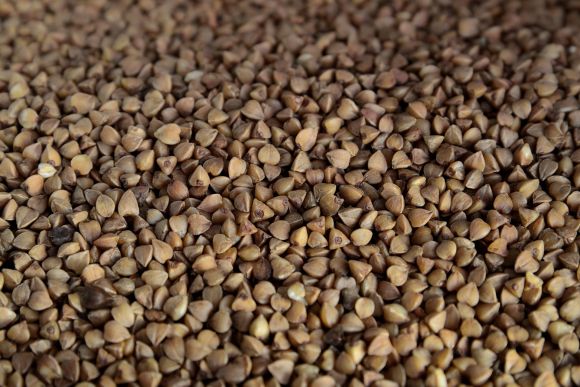
For all diets:
We have known since 2005 that many more people suffer from gluten sensitivity than was previously thought. A food intolerance that is identified early on is not a problem, but then it is very important to cut these foods out of your diet.
Digestive troubles (malabsorption) often show up as temporary bloating (meteorism, flatulence, or indigestion).
Botanically speaking, pseudograins such as amaranth (also Amaranthus cruentus and Amaranthus caudatus), quinoa, white goosefoot (all Amaranthaceae), and buckwheat (polygonaceae) are not grass seeds. These are therefore good substitutes for those who have a gluten intolerance, such as celiac disease.

An increasing number of children and adults cannot consume gluten or casein (in dairy products) and therefore eat a gluten-free and casein-free diet (GFCF diet).
People with autism, ADHD, and certain other disorders should strictly avoid dairy and grain products.
Unfortunately this fact is not very well known. But the difference is huge! See also this book review on "Die Ernährungslüge" (The diet lie).
According to Wikipedia, between 3 and 15 % (depending on the test) of the general population have antigliadin antibodies (AGA), which are associated with an idiopathic gluten sensitivity (GS, nonceliac gluten sensitivity, NCGS, and gluten intolerance).
It must mean something if an article on Wikipedia (German version) contains the comment that a recent publication even asks the question of whether wheat is actually healthy for anyone at all.
The publication appeared in 2006.
It wasn’t until 2006 that scientists were able to determine whether someone was suffering from gluten-sensitive enteropathy (GSE). This is a precursor of celiac disease (sprue), and celiac disease can now be avoided through early detection of GSE and appropriate diet changes.
Just this fact alone makes it obvious that trendy diet books will lead you astray. The issues are much more complex.
2.2. Lacto-vegetarians and ovo-vegetarians
Lacto-vegetarians do not cut out all animal products. They don’t eat eggs, but they do include milk and dairy products in their diet. And the opposite is true for ovo-vegetarians. They don’t consume milk or dairy products, but they do eat eggs.
2.3. Lacto-ovo vegetarians (vegetarians)
Lacto-ovo vegetarians are people who do not consume any food products that come from dead animals. This includes land animals, fish, mollusks, and crustaceans. The narrower terms given above serve to describe stricter groups. Lacto-ovo vegetarians are usually just called vegetarians.
Terms such as vegans and lacto-vegetarians put additional restrictions on a vegetarian diet.
2.4. Semivegetarians and pesco-vegetarians
People who eat fish are actually not vegetarians; at the most, they are pseudovegetarians. Nevertheless, some people still use the terms semivegetarians, part-time vegetarians, or near-vegetarians for people who avoid red meat, but occasionally eat fish or poultry, or who eat meat only very rarely.
If the “dead animals” aren’t warm-blooded animals, but are instead marine animals, then the terms pesco-vegetarian and pescetarian (pescetarianmism, lacto-ovo-pesco vegetarianism, and pesco-vegetarianism) are used.
The issue of the supply of vitamin B12 for vegans
As long as the issue of the supply of vitamin B12 for vegans is not entirely clarified, I understand that some vegans eat fish every now and then.
There are supposedly also people who are antipescetarians.
As a vegan raw foodist, I first ate a very strict diet for seven years, but then decided to eat raw fish occasionally in order to “be on the safe side” in regards to vitamin B12.
It was not because of iodine, vitamin A or E, or the now much-touted omega-3 fatty acids because you get plenty of these if you are eating a balanced raw food diet.
It was because of the vitamin B complex, which you can also get by the way of regular dry yeast or nutritional yeast — although these do not contain enough vitamin B12.
I will discuss the problems concerning vitamin D and B12 later in more detail. Nutritional yeast is actually not a raw food; it is yeast that has been inactivated by heat.
2.5. “Pudding vegetarians”
On the topic: What is definitely the wrong diet?
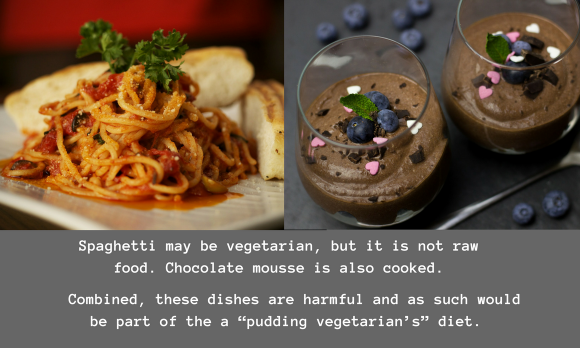
Several decades ago, vegetarians had a great desire to eat a lot of sweets.
Long-term studies show that vegetarians eat much healthier in many respects than people on a “normal” or whole foods diet, but because of variations in the different subgroups the results differ greatly. “Pudding vegetarians,” in particular, do vegetarianism a disservice; they harm the reputation it has of being a good health choice.
It has also been determined that a surprisingly large number of people who are vegetarian or are on a raw food diet give up smoking and drinking alcohol or they choose to only drink alcohol on rare occasions and then only in small amounts.
3. Famous vegetarians, vegans, and raw foodists
As I have taken this list from the book "Warum ich Vegetarier bin" (Why I am a vegetarian) by Helmut F. Kaplan (Rororo Publications, nonfiction book 9675, 1995), I cannot guarantee its completeness, nor confirm that the people listed actually lived as vegetarians and if so, for how long.
Animals are my friends — and I don’t eat my friends. George Bernard Shaw (poet)
At the time I wrote this article, the German Wikipedia site contained only an incomplete list of prominent vegans, a historical overview of vegetarianism, and a listing of the first vegetarians. And the page about famous vegans has since been deleted! However, there is a much better description in English and an extensive list of famous vegetarians and famous vegans.
True human culture will only exist when not only the eating of humans, but also the eating of any kind of meat is considered cannibalism. Wilhelm Busch
I know that Mahatma Gandhi, who helped India to achieve independence, ate a raw food diet. Jesus is also said to have been a vegetarian or vegan (as an Essene, see sprouted bread or essene bread). However, we should distinguish between evidence and myth.
Famous vegetarians, vegans, and raw foodists
A very incomplete list (from 2001): actress Lil Dagover, author Karl Heinz Deschner, theologian Eugen Drewermann, inventors Thomas A. Edison and Albert Einstein, actor and independent scholar O.W. Fischer, singer Nina Hagen, author Lotte Ingrisch, singer Michael Jackson, authors Franz Kafka and Manfred Kyber, singer Madonna, musicians Paul and Linda McCartney, singer-songwriter Reinhard Mey, poet Christian Morgenstern, pianist Elly Ney, politician Madeleine Petrovic, authors Volker E. Pilgrim, Romain Rolland, and Jean Jacqes Rousseau, actress and author Barbara Rütting, theologian, organist, philosopher, and physician Albert Schweitzer, and writer and Nobel laureate Isaac B. Singer.
On the website [vegetarier.at], we can find a list that includes many more celebrities from the entertainment and media industries who are vegetarian or at least close to it: Dirk Bach, Kim Basinger, Elizabeth Berkley, Linda Hair, Blümchen, Doris Dörrie, Amelia Fried, Richard Gere, Woody Harrison, Elke Heidenreich, Chrissie Hynde, Stephie Kindermann, Katja Lührs, Stella McCartney, Stephanie Philipp, Kate Pierson, Shania Twain, and David Wilms.
4. Raw food diet
For me, a regimen is a short-term diet used, for example, to beat a disease. I believe that raw food diets are best when they are part of your preparations to change your regular diet in the long term.
Specialized hospitals and treatment centers
Specialized hospitals and treatment centers assist people with special diets. In most cases, you would be accompanied by diet assistants (dieticians, nutritionists, and nutrition experts) and surrounded by medically trained personnel.
At a specialized clinic, nutrition experts and cooks tend to make food that is more interesting and varied than you would do so at home as a beginner. And in most cases, you will also find reading material on the subject, like-minded people, and ideas for your undertaking. However, it is important to note that institutions are different as many focus on a certain type of raw food.
Some institutions may offer a very special type of raw food and look down on any other types of raw food diets.
Try out different things; find out about the many advantages and disadvantages, and ask a wide range of people to explain their varying viewpoints to you — don’t just listen to and read about ONE VIEWPOINT!
I feel that raw food is so far removed from the ‘normal’ diet that sectarianism is unnecessary and counterproductive.
A short-term raw food diet with special rules is only valuable in a few special cases.
4.1. Vegan raw food diet
 | Entrance to a vegan raw food restaurant in California, Spring 2013. The food and drinks offered and prices are written on blackboards. The restaurant is relatively simple and clean. Homemade foods are available for takeout. |
The amount of cooked food that you eat plays a much bigger role than the type of raw food diet you choose to followed. I call someone a raw foodist only if their diet consists of more than 90 % raw food. Studies on raw food diets should only include raw foodists who meet this requirement because the negative effects of occasionally eating cooked food are enormous.
Cancer prevention through diet
Cancer prevention through diet is not very well known. Nevertheless, Wikipedia includes some interesting facts:
-
Increased fiber intake reduces the risk of colorectal cancer. Even an increase in the daily amount of fiber from 15 to 35 g reduces this risk by 40 %.
-
High consumption of meat (red meat) increases the risk of intestinal cancer while fish consumption significantly reduces this risk. For every 100 g of red meat consumed, the risk of intestinal cancer increases by 49 %. In the case of sausage, it increases up to 70 %. In contrast, for every 100 g of fish consumed, the risk for this disease is cut in half.
-
Eating 80 g of fruits and vegetables every day reduces the risk of mouth, throat, larynx, and esophagus cancer by 9 %. This effect holds true up to a threshold of 300 g per day. Larger quantities apparently do not further reduce the risk of the disease.
-
Eating an increased amount of butter, margarine, processed meat, and fish, together with a lower amount of bread and fruit juices, increases the risk of breast cancer.
In the German version, of course, there is a relativization in which only certain studies of the "European Prospective Investigation into Cancer and Nutrition" (EPIC) 2010 are selected.
Now let’s consider the amount of time it takes for the two types of food to pass through the gastrointestinal tract.
Mixing of raw and cooked food can cause intestinal fermentation and/or putrefaction. Each fully cooked meal you eat can disrupt the system. If you eat raw food for a month or more without exception, you will definitely notice disruptions to your digestion and state of health if you include cooked food.
I will start out with the most stringent type of raw food diet, which avoids any kind of animal protein. Moderate consumption of honey is often excluded from this diet. You can find people in the "Giessen Raw Food Study" (see the book review) who hold to this most strict raw food diet. They do so for the health benefits and because they have concerns about the environment and the tragic treatment of animals.
For various reasons, more and more people want to limit these types of industrial farming that have been carried out to extremes and are harmful to us and the world.
"Milk sucks"
For example, the British animal rights group PETA opposes the consumption of milk in a very militant way [milksucks.com]. Using comical postcards, the organization says that milk makes you fat, creates allergies, and is loaded with hormones and pollutants [FACTS 20.9.01-117].
Their website is even more interesting. The pages point to numerous international studies showing the relationship between high milk and animal product consumption and various diseases. Prominent studies show the same clear connection.
The reasons for this are quite obvious. I will explain these in other articles as well. If you are familiar with this topic and look in Wikipedia under osteoporosis (link above), then you will realize how shamelessly the industry works in conjunction with “Big Medicine” to keep this matter under control. For example, in April 2014:
A calcium intake of about 1 g per day significantly contributes to prevention of osteoporosis. (base therapy DVO) [Dachverband Osteologie e.V., umbrella association for German-speaking osteology organizations]. One gram of calcium is contained in a liter of milk or 100 g of hard cheese. In addition to dairy products (especially milk and yogurt), green vegetables such as kale and broccoli are also very good sources of calcium. Anyone who does not drink milk or eat cheese should take 800 mg of calcium in tablet form daily.
This angers those who know how harmful dairy products are for osteoporosis. The patients continue to suffer. See also this book review on the harmful effects of milk.
On the English version of Wikipedia, everything concerning milk and dairy products was removed a long time ago. Vitamin D consumption is mentioned, but the associated health benefits are not addressed.
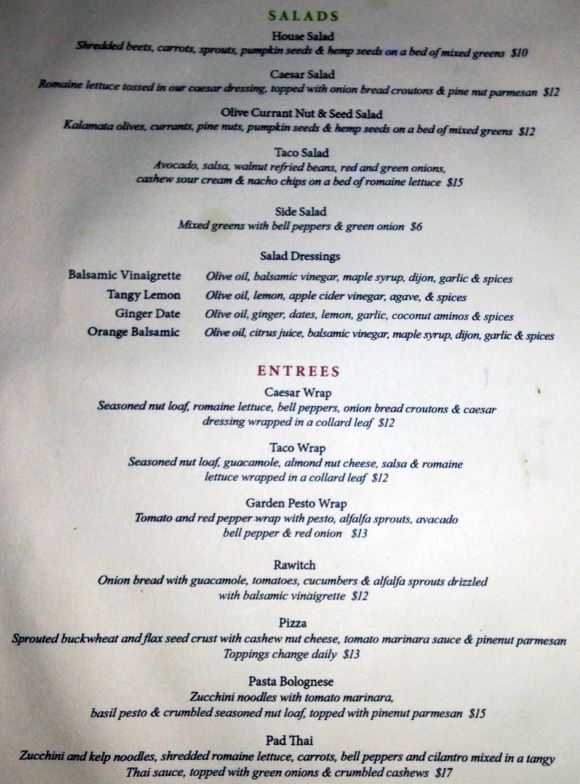 | Menu from Rawlicious, a simple raw food restaurant in New York City. This menu from spring 2013 includes many kinds of salads and appetizers. |
Among vegans, you find the most sectarians in terms of diet (and perhaps even in regards to society). However, I also find this type of diet to be particularly healthy, even if I occasionally eat raw fish and therefore strictly speaking do not belong to the group. I would like to help you increase your awareness here so that you can form your own opinion and, if possible, avoid diets that are too limited or less advantageous in the long term.
The “living foods” movement by Dr. Ann Wigmore
The “living foods” movement by Dr. Ann Wigmore is one of the types of raw food vegan diets. From 1960 to 1990, she built up this “living foods lifestyle” in Boston, Massachusetts. She died in 1994 at the age of 84 in an accident (suffocation by fire). Before her death, she had opened a number of institutions. One of them is located in Puerto Rico and is still in operation today.
Ann Wigmore pointed out that there were instructions on how to sprout seeds to eat as early as 3000 BCE in China and that Hippocrates’ teachings about 400 BCE were similarly inclined. Other Americans founded further types of raw food movements.
There were also early proponents of a pure vegan raw food diet in Europe, who today are no longer well known because of a lack of followers of their specific type of diet. Successors base their diets in part on such teachings, but have developed and promoted their own personal diets under their own name.
Sonnenköstler and Urköstler
In Germany, for example, there is a group of vegan raw foodists called the Sonnenköstler (raw foodists who eat fruit) and also a group called the Urköstler (raw foodists who eat fruits and vegetablest that are wild or at least fresh and in the most original form possible) founded by Franz Konz.
Most vegan raw foodists do not follow specific rules or have additional restrictions. There are however also people who want to live only on a few types of fruits or vegetables or reject certain types of vegan food.
I cannot be the judge of whether this type of diet is sufficiently varied and balanced. But for the above groups I can provide an assessment — that is as long as the diet is varied, balanced, sufficient in terms of quantity, and doesn’t diminish your state of health.
Enzyme weaknesses or problems with your digestive tract because of major operations may cause you to have limitations, and a different approach may be required.
4.2. Extreme forms of a vegan raw food diet
Special types of juice cures or special diets based on only a few different foods are sometimes useful as a short-term diet (e.g., diet developed by Rudolf Breuss).
Juice cures
A healthy person can follow such a diet for up to six weeks without it posing a health risk. The body can get the fat-soluble vitamins that are lacking from its reserves. But this would be unhealthy in the long term. Two or three weeks would probably be the ideal length. And it’s important to remember that cancer is not simply wiped away as Breuss says, but that it can return if you go back your old lifestyle.
Breuss treatments
In the 1980s, I helped a 35-year-old Austrian entrepreneur with his Breuss treatment as I was selling organic produce from my farm in Tenerife. In Austria, there were no longer any options with conventional medicine, and he knew what this meant for malignant melanoma.
Quite against my advice, he then resumed his rather indulgent lifestyle. As I expected, the disease returned after several months, and he died about a year later.
He stubbornly believed that this treatment had healed him for good and he was a man of faith, but in my opinion he wasn’t realistic enough. This became obvious from an incident where he once received orange juice instead of water with a little lemon juice and then drank the juice. However, afterwards he came to me full of remorse and asked what he should do now. I advised him to simply add another day to the treatment regimen because I knew he would otherwise doubt that he could be cured.
Furthermore, even when he had a relapse, he didn’t follow my recommendation of going back to a strictly vegan raw food diet. He even laughed at me because he so strongly believed in this treatment.
For no special reason, I decided to try this treatment regimen out myself in 2006, but stopped three days short of completing it because of my full workload. I gave it up early because I could not even provide my own very simple phone number during a phone call.
It does not speak well of a balanced and safe raw food diet if raw foodists eat exclusively apples or bananas. It may work for many months, but then health problems will show up. I will write more about this later.
Mono diets
Mono diets, which involve consuming only one type of food per meal, are another possibility. But it is unnecessary because our digestive system works much better than followers of this diet believe. Nevertheless, I will come back to the problem of digestion and will explain why it is important that we make sure not to eat too much and not to eat too many different ingredients at each meal.
I basically live by the motto “uncooked — unmixed — unseasoned” in as much as is possible [234-7]. I cannot recommend certain special types of vegan raw food diets that rely on certain types of foods, even if they have a large following.
Waerland diet
An example of that would be the Waerland diet (and Kruska, type of porridge) created by Are Waerland. He recommends trying to eat primarily grains. Kollath, Oshawa, Bruker, and others recommend grains as well.
However, I do recommend cutting out certain types of grains. Many people suffer from celiac disease (sprue) or a gluten intolerance, and not without reason.
At the beginning, I didn’t include any wheat in my Erb Muesli. I did so even before Gustav Gattiger, the head of the Waerland movement in Switzerland who ate the Waerland diet died of cancer. He was however over 80 years old. The question is was it “despite or because of the grain-based foods” [234-20].
The measuring units for diabetics are called bread units (BU) for a good reason.
Even in raw form, grain is still too new to be used in such quantities. At the beginning, in particular, I recommend simply eating a “basic and abundant raw food diet.”
A number of authors have proposed quite feasible raw food diets that are special in a certain way. But to claim that they are “the only healing raw food diet” of the many raw food styles is often seen as difficult and at the most results in just a small improvement — and often results in the opposite.
Types of raw food diets
These kinds of raw food diets are mainly based on writers from the 1960s and 1970s. Here is a list of only those authors whose names begin with the letter “A”:
Aehnelt, Alexandrov, Alfen, Allinger, Altschüler, Asimov, and Aurich to show you just how many authors concerned themselves with “esoteric views” or “living macromolecules” (LM) during that time.
In the German-speaking countires, Dr. rer. nat. F. A. Popp was the main proponent of the LM concept. He popularized his postulated biophoton theory [90] (photon) in various publications and books from 1974 to 1979.
Popp dealt primarily with the question of how cancer formation is initiated (carcinogenesis). He probably takes up H. P. Rusch’s views from publications that appeared in 1947. Ostertag’s bibliography [33] lists about 400 publications — many of which are on these issues.
I would like to focus here on just two common raw food diets along these lines so that you can get an idea of variations out there.
Urköstler
Urköstler believe that green wild plants are the very best type of food to eat. I cannot imagine a lot of people going out every day to look for the parts of the plants listed. It would be great way to add variety to your diet on occasion, and those who can do it for every meal should continue to do so.
Examples of such foods are hogweed stem, brooklime (European speedwell), comfrey (toxic) or symphytum officinale, borage, thistles (actually cotton thistles), some types of ferns, Galinsoga parviflora — in short, a long list of plants. It also includes the Jerusalem artichoke.
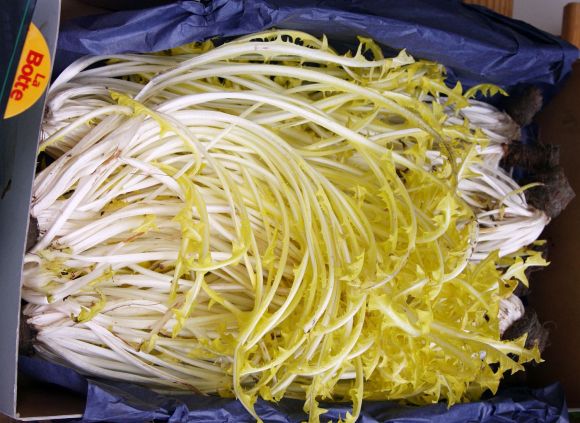 | The dandelions you can buy at the grocery store are usually not wild. |
In winter, Urköstler eat blackberry leaves by first scraping the prickly spines off the inner ribs and then bite the fruit off from the leaf piece by piece [230-521]. Blackberry leaves are also available as caffeine-free tea (e.g., as a breakfast tea) and for medicinal purposes.
The next food group that is part of this diet is green organic vegetables such as avocados, bamboo shoots, cauliflower, borage, broccoli, and brussels sprouts, which are to be grown in as close to their original form as possible. After that comes fresh fruit like mature pineapple, apples grown in as close to their original form as possible, oranges, and actually the entire list of the many fruits and tropical fruits (exotic fruits, also see this list of culinary fruits).
This is followed by root vegetables such as fennel, squash, carrots, and beets. Everything should be as fresh as possible so that the biophotonic radiation is highest. For example, a walnut is said to show almost no or absolutely no biophotonic radiation after two months of dry storage.
Aura
This is what the Buddhists meant with their writings about aura (energy body), which anthroposophists focus on. Professor F.A. Popp wrote a book on the topic.
This aura is supposed to be particularly strong in wild plants. Fresh organic products come in second. Plants that are contaminated with pesticides and artificial fertilizer residues emit a significantly lower number of photons. In principle, there is nothing wrong with this type of raw diet, to the contrary. However, my goal is to help you make a change in a relatively simple way. You can always try more difficult forms later.
Sonnenköstler
This raw food diet focuses mainly on products that are exposed to the sun. We might assume that this would largely coincide with the diet of the Urköstler. But no! This diet consists mainly of fruit.
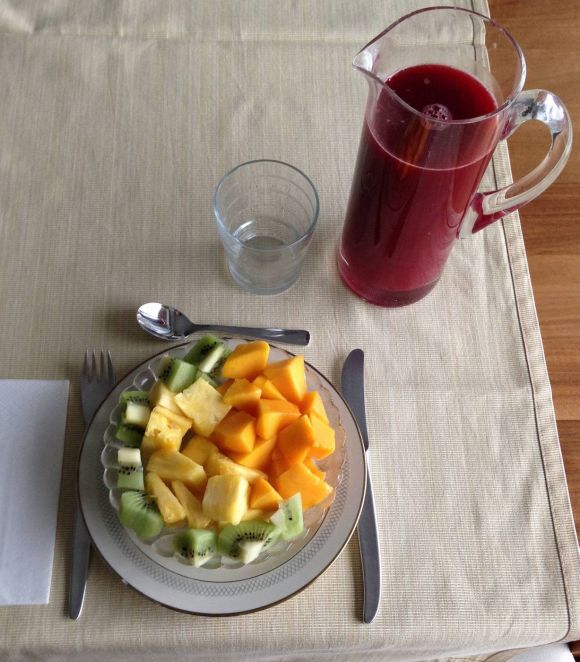 | Snack consisting of mango, pineapple, and kiwi. Accompanied by freshly squeezed orange juice made from blood oranges, which is a popular variety (enough for multiple servings). It would be better to eat the oranges as slices. |
Helmut Wandmaker (1916–2007) is Germany’s most popular advocate of this form of raw fruit diet. In "Willst du gesund sein? Vergiss den Kochtopf!" (Do you want to be healthy? Then forget your saucepan.), he writes: All other foods burden the body in some way. This could even be said of vegetables since vegetables do not provide all of the necessary nutrients immediately, in particular, glucose and/or fructose.
Wandmaker - the exclusive fruit diet
Unlike the majority of herbivores, we do not have the enzymes (cellulase) in order to get enough energy out of grass, stems, leaves, and bark
[234-8].
The following statement comes two pages later: For decades now, experts and laboratory scientists have not tired of warning people about protein, calcium, iron, and vitamin B12 deficiencies that a raw food diet causes, although many animals around us almost exclusively eat only grass or leaves.
Is this then a “positive book” as the author proclaims in bold print one section above?
The author seems to forget that animals are exclusively grazers and browsers have developed a digestive system that functions in a completely different manner. They use certain substances from grass. However, humans and other animals do not have this ability.
And, if necessary, these animals eat soil or even feces as they contain a lot of vitamin B12. The issue of vitamin deficiencies, including vitamin D, mainly affects the elderly.
Nevertheless, I don’t want to ruin interesting reading for you as this diet also has its place.
Wandmaker also includes reasons why it would be very advantageous for us to refrain from eating certain grain products. However, I find too many remarks in his writing that are questionable or do not set a good example, such as: A man from Florida ate only oranges for six years
[234-32].
This is neither verifiable, nor do we know what happened to this person later in life.
Wandmaker writes, The exclusive fruit diet was rediscovered at an early point in time, for example, by Dr. Victor Pauchet, in 1909 in Paris and Professor Jaffa, in California, who undertook a seven-year trial with Chinese and attained amazing results.
Many advocates of this diet came before him, including Essie Honiball and Dr. Carrington.
Wandmaker also suggests eating kelp or seaweed products as was recommended by Dr. Norman W. Walker [234-216] since these contain the entire spectrum of nutrients of the sea.
He stressed that Walker lived to be 116 years old. Wikipedia stays that he lived from 1886 to 1985, which is still 99 years.
In the same year of Walker’s death, Harvey and Marilyn Diamond introduced a similar concept called "Fit for Life". In contrast, Drs. Wallach and Lan wrote in their book "Rare Earths: Forbidden Cures" that people will “experience” an early death if they do not consume 90 “elements” in sufficient quantity. Dr. Kraft made do with 64 “essential elements.”
Wandmaker writes: If you consume these essential minerals in addition to vitamins, you will be covering all of your bases. I get these mineral supplements in liquid form from the United States. Such mineral complexes from the U.S. are now also available in Germany.
Why are they consuming so many artificial products if they want to eat as naturally as possible?
Here I must mention that I was at several organic grocery stores in California in 1972 and they already seemed like a health store and pharmacy in one. A large portion of what they offered consisted of dietary supplements. At the time, I wasn’t interested in raw food, but in a “healthy diet that included a lot of raw organic fruits and vegetables” and I bought several things.
However, I did wonder, “Why are they consuming so many artificial products if they want to eat as naturally as possible?” Unfortunately, this absurd trend also became established in Europe. An entire industry is expanding into an area where it doesn’t belong.
Several authors promote this trend or accept it without question. But certainly nature still provides us with what we need after we change our eating habits so long as we primarily eat natural products that have been produced using only natural fertilizers. We should however make sure we get enough iodine as glaciers have left many areas with soil that contains too little iodine.
If we eat a large enough variety of foods, then our food is grown in many different types of soil. I therefore recommend that you also eat tropical and subtropical fruits, even if — depending on the region and method of transport — this may result in more of an ecological burden.
But then we can be sure that we are getting all of the essential minerals, such as iodine, in sufficient quantity. Selenium is one mineral that is definitely a problem with these extreme diets.
Selenium deficiency
See selenium deficiency. Vegans usually do not have to worry about selenium (which is essential) if they occasionally eat a Brazil nut.
A Brazil nut weighs 3 g on average and contains about 60 µg of selenium since 100 g of Brazil nuts contain between 0.8 mg/100 g and 8.3 mg/100 g of selenium — 1.9 mg/100 g on average.
The glutathione peroxidase activity in the blood serum (GPX 3) reaches its maximum value when the daily intake is about 1 µg per kilogram of body weight. However, for the optimal concentration of the transport protein selenoprotein P in the blood serum, a much higher intake (see also selenocysteine, L-selenocysteine) is needed. In general, a supply of 30 to 70 µg of selenium per day is sufficient. Deficiency symptoms have been found at 10 µg and below.
Volcanic soils are deficient in selenium. Regions with a low content of selenium in the soil include parts of Scandinavia, China, and New Zealand. Malabsorption and medications may also be the cause of a selenium deficiency.
See Wikipedia (German version): Diseases caused by a lack of selenium are seen only in areas with an extremely insufficient supply of selenium such as North Korea and Northeast China as well as a few other specific countries. In our part of the world, generally only preterm infants, patients receiving parenteral nutrition, and alcoholics can develop a selenium deficiency.
...
A critical evaluation published in "Pharmainformation" (medical journal in Austria) in June 2005 stated that the studies currently available could provide no evidence that taking additional selenium would be of any benefit in any context. ... This study did however show an increased incidence of prostate cancer in patients taking vitamin E and increased development of diabetes when additional selenium was taken. ... A high concentration of selenium in the blood is correlated with a higher risk of developing diabetes.
Selenium is highly toxic in higher concentrations. And the range between concentrations that cause deficiencies and toxic concentrations is very small.
If possible, you should not take selenium supplements because this significantly increases your risk of diabetes. A selenium intake of more than 3'000 µg/d can lead to cirrhosis of the liver, hair loss, and heart failure.
If a person consumes 400 µg/d regularly, this can cause poisoning symptoms.
4.3. Vegan raw foodists (basic diet)
A low nutrient density is common of vegan diets and this requires a good digestive system. If you observe certain rules, a vegan diet can provide you with sufficient amounts of all of the necessary substances. You just need to make sure that your calorie intake is adequate. As described elsewhere, there is still the problem of getting enough vitamin B12.
But no matter what type of diet you eat, you need to make sure you are getting enough vitamin D. A vitamin D deficiency is caused by insufficient sun exposure and in the north by the low position of the sun. Both of these conditions are relevant for older people and also for people who eat a “normal” diet.
We can live on plant-based foods alone
Consuming a sufficient number of calories is the main challenge of a strict vegan diet. Manual laborers may very well find it difficult to get the calories they need. However, see information about Ironman Triathlon pro Brendan Brazier, who is vegan.
And at last, even the field of nutritional science has discovered that we can live on plant-based foods alone. And many people have since proven that this is possible, in particular, those who have eaten a vegan diet for religious reasons.
For 2'500 years now, certain Jain followers have spent their entire life eating a vegan diet. The question that remains is whether this is advantageous or disadvantageous. I would like to learn more about the results.
At the beginning of the twenty-first century, this fact was not widely known. And people are still stuck in the “carrot-plus-fat thinking” (beta-carotene) and in the “egg-plus-potato thinking” (biological value of protein) even though these findings were disproven some time ago.
This value of protein only holds true as a total and over time, that is if a person doesn’t eat whole foods for a longer period of time, but instead eats an unbalanced diet.
We will come to the “certain rules” that must be adhered to a bit later. But right now we are looking at “secondary substances.” The media deals with new findings in a very black-and-white way in that they speak of the good qualities of one substance and the bad qualities of another substance even though these are often found within the same food.
Secondary substances
Under the same circumstances, a discussion can end with entirely different conclusions. This is because the goal of the discussion often determines the outcome.
Certain foods are not intended for us to consume in raw form because they contain toxins. But these poisons change to innocuous substances when they are heated (e.g., in beans). Other substances, such as starch, are more digestible when they are heated. Starch is found mainly in rice (89 %), potatoes (82 %), cassava (77 %), barley (75 %), and wheat (74 %).
Unfortunately, doctors today speak of carbohydrates when they mean starch. Every plant provides carbohydrates, but in a form that is easier for humans to consume. This is an example of how even well-educated people can be completely misled by fads.
In 20 years, when the current findings are the mistakes of the past, some things may again be completely different. ...
Some people live on the edge of physical subsistence with their diets, which in experiments on rats and/or mice has resulted in a significantly longer life expectancy. Strict vegans should set a weight goal that is no less than 20 BMI and check their weight at least once a month.
You might not know that you may not feel hungry even if you aren’t getting adequate nourishment. This is the case for all types of diets. But oleaginous fruits (e.g., nuts and seeds) such as avocados are ideal regulators. The same also applies to thirst. Older people, in particular, often don’t feel thirsty even if their liquid intake is inadequate.
4.4. Vegetarian raw food diet
Raw food vegetarians may consume milk and dairy products and/or raw eggs, but not meat or fish. But what these vegetarians eat is in most cases no longer a pure raw food diet. The intensive preparation required often wins out.
As with cooked food, we distinguish between ovo-vegetarians and lacto-ovo vegetarians (vegetarians) as basic terms. If you are transitioning to a raw food diet for reasons other than health problems, I can understand this type of diet, but over time it may lead to similar lifestyle diseases that we see with cooked food.
I am not going to deal with this type of diet as I don’t have enough relevant sources and information. I do however know that this type of diet leads to a lax attitude regarding raw food and even to extremes where people say thing like, Since I eat a salad every day, I’m a raw foodist
[217-195].
And 8 % of the participants in the "Giessen Raw Food Study" felt that the main feature of a raw food diet is that the food eaten is still “mechanically intact.”
4.5. Raw food diet including fish and meat
People on a pure raw food diet rarely eat meat or fish. I must reiterate that with a raw diet, I am referring to people who at the very most would make the exception of eating cooked food, for example, if they get invited to a party or are in a restaurant.
If you are as sensitive as I am, you may experience negative physical reactions after such an exception, especially if you are eating cooked food for dinner. I would like to hear more about your experiences with this.
If you don’t experience any negative physical effects after eating a meal of cooked food that includes meat, fish, or dairy products (e.g., cheese), then your body has probably not yet fully adjusted to a raw food diet, or am I wrong?
Eating raw fish occasionally as sashimi in a Japanese restaurant, possibly accompanied by sushi (and some cooked rice), does not seem to have much of an effect. I lack experience with raw meat.
Raw fish
There are more raw seafood dishes than is generally known. Perhaps you have tried gravlax at a party, served on a bun. Actually, it means “buried salmon.” The fresh fish was traditionally fermented for at least three days buried in a hole in the ground or on the beach. Today, it is cured for a few days in a marinade of salt, sugar, and dill.
However, this is nothing compared to Surströmming, which is a main dish in traditional northern Swedish cuisine. Even the southern Swedes run from this dish as it stinks so badly. Thanks to the long fermentation process, this “sour herring” does however taste very good, I discovered this in the early 1970s when I was invited to dinner in Sweden. It is only available in cans because it has a strong smell.
Sashimi
Sashimi, the most well-known raw fish here, is raw fish cut into pieces and served with lettuce, radish, and/or raw vegetables. The type of fish used is usually tuna, a large predatory fish, or yellowtail amberjack, (also called seriola lalandi, dorado, and seriole chinchard), salmon, swordfish, or mackerel.
There are more seafood dishes popular with those on cooked food diets, (in raw or cooked form) such as oysters, soft-shell clams, abalone, shrimp, scallops, Pandalus borealis, conger eel, and squid. They are rarely served as sashimi.
The Atlantic herring is probably the most widely eaten fish in the Western world. Salt herring and matie are mostly eaten raw.
There are a number of reasons to abstain from eating sea food. A major reason is the environment.
Raw meat
Nevertheless, meat as part of a raw food diet does need to be addressed here. Steak tartare is probably the most famous raw meat dish in the West. It is also known as “filet américain” and “tatarský biftek” and is made of high-quality, tendon-free ground meat from beef, erroneously also called steak tartare.
Meat has been a taboo for me
The second time I was on a raw food diet I did eat a raw steak tartare once from an organic farm. It was tasty, but a little hard to digest. I then attempted to eat organic meat a second time but no longer enjoyed it. I found the meaty taste to be repulsive or maybe it wasn’t actually organic meat.
Since then, meat has been a taboo for me. This is also because I have a certain reverence for animals. There are probably only very few people on a raw food diet who advocate eating meat. An exception here is Guy Claude Burger, a Swiss national living in France. His views seem to be a mixture of very good and unfortunately very questionable approaches.
He does however thoroughly cover good reasons for eating a raw food diet, which is why I recommend a critical review of his book and wrote a summary (German only) of his main ideas. After reading my book review, you will know which of Burger’s instinctotherapy approaches I don’t accept and which I do.
Cold-smoked ham and bacon are other options. But I doubt that smoked meat is very healthy for us as it contains smoke particles and other carcinogens — and also because of the curing substances (nitrites).
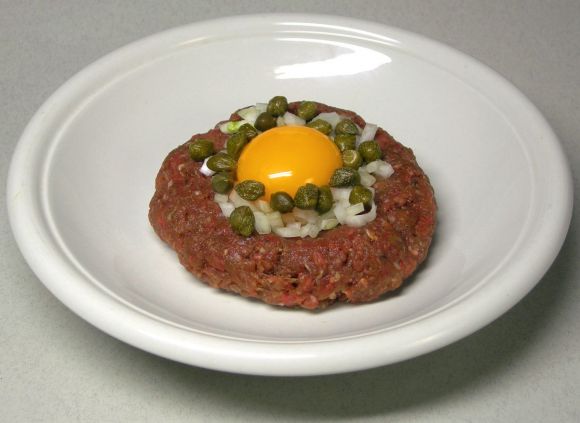
Mett is prepared in a similar way, but from pork, and is usually served on buns for those who eat cooked food. It is a minced pork dish that is popular in Germany and Poland. If it is specially seasoned with onions, it is called onion mett. Ham mett is considered to be a special quality of mett. With a cold buffet (cold plates), it is also served as Mettigel (pork hedgehog).
Raw meat sausage
Mett is also made into sausage, as a raw meat sausage.
Other manufacturing processes produce either Brühwurst (scalded sausages) or Kochwurst (precooked sausage) (see Category: Sausages).
The basis for these classifications of sausage is the manufacturing process and not the way they are consumed. The raw sausage is either eaten fresh or undergoes a maturation process of drying, marinating, and lactic-acid fermentation or smoking. Cold-smoking takes longer as it takes place at temperatures between 15 to 25°C.
Raw sausage is also served as a meat paste, for example, Teewurst. Wikipedia: Sliceable raw sausages are typically the longer-aged, summer sausages such as Ahle Wurst, Landjäger sausage, salami, chorizo and saveloy.
This sliceable raw sausage is usually eaten raw by the consumer.
The Swiss brühwurst Cervelat is traditionally not made with raw meat.
I can easily imagine that true raw foodists no longer enjoy meat. Here I simply wanted to give you a listing of the possible types of food you could eat on a raw food diet. At least at the beginning,, fish and meat might help a somewhat reluctant partner along. It would be great if you could share your experiences with me and also the other readers.

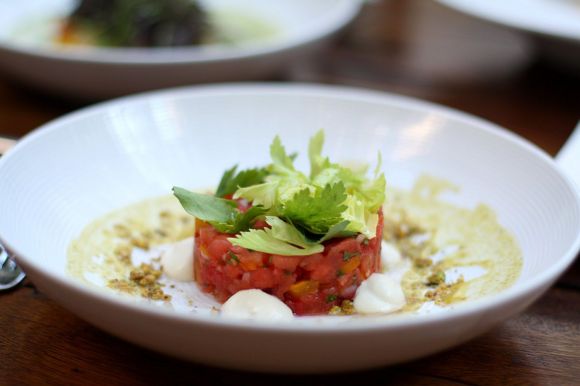
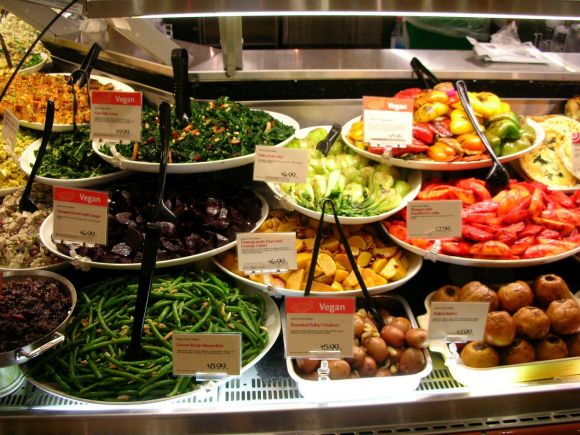
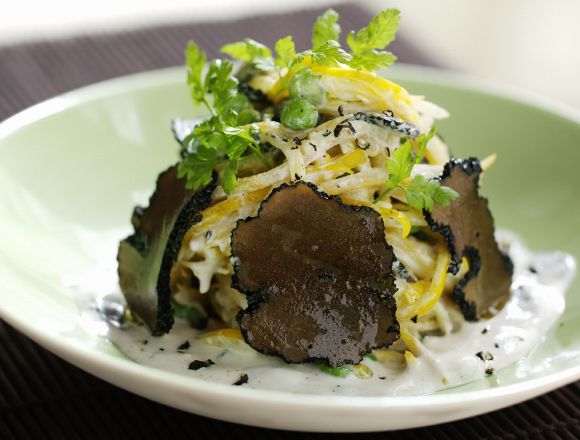


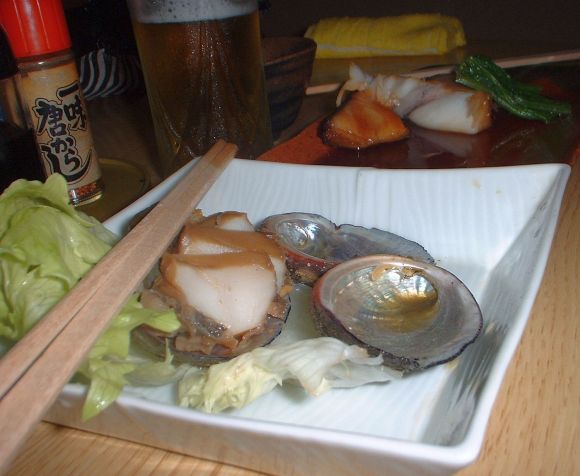
Comments